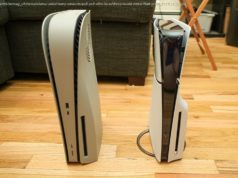Apple’s ( AAPL) MacBook Air was a revolutionary device when it was first unveiled in 2008 thanks to its incredibly thin and light design. And Apple…
Apple’s ( AAPL) MacBook Air was a revolutionary device when it was first unveiled in 2008 thanks to its incredibly thin and light design. And Apple cemented the laptop’s legacy as a pioneering device in 2010 with a redesign that brought down the 13-inch Air’s price from $1,799 to $1,299 and eventually $999, while improving on its performance and battery life.
But outside of some spec bumps, the Air hasn’t changed much since then. In the meantime, the competition has not only caught up, but surpassed the Air in nearly every way.
On Tuesday, Apple finally responded, rolling out a new, more powerful Air that’s thinner and lighter than before, and finally packs a high-resolution display. This is likely the MacBook everyone should buy even if its $1,199 starting price is $200 more than its predecessor’s.
While the MacBook Air was originally meant to be Apple’s thinnest MacBook, the fact that it went for so long without a proper redesign meant that newer products like the MacBook and the recently updated MacBook Pro undercut the Air’s dimensions.
The new Air is certainly slimmer and lighter than its predecessor, but it’s actually a hair thicker than the 13-inch MacBook Pro. The Air measures 0.61 inches thick, while the Pro is 0.59 inches. It’s a nitpicky difference, but likely has to do with the Air’s wedge-shaped design. The standard MacBook is still the thinnest of Apple’s laptops at 0.52 inches thick.
Still, the new Air is lighter than its predecessor and the MacBook Pro. It’s not lighter than the MacBook, though that machine is meant to be so light you can throw it in your bag and forget it’s even there.
Physically, the Air looks like, well, an Air. Apple did change out the keyboard from the original Air to the new butterfly-style keys found on the MacBook and MacBook Pro. The company made it a point to note that the Air’s keyboard uses Apple’s third-generation butterfly keys, which means they should be quieter and, hopefully, not suffer from the kind of dust issues the Pro had.
Apple also equipped the Air with the same Force Touch trackpad found on the MacBook Pro. It makes for a much larger area to navigate, but I find the extra level pressure sensitivity a bit awkward at times.
Then there’s the new Touch ID sensor. Similar to the Touch ID sensor on the Pro, the Air’s allows you to unlock your Mac, log into apps, and make online payments with your fingerprint. It also doubles as the Air’s power button.
Apple has also stepped up the audio quality on the Air, adding speaker grills to either side of the keyboard. The Pro has a similar setup.
Hallelujah! Apple has finally done it. After leaving the Air with a screen resolution of 1440 x 900 pixels for years, the company has at last updated the Air with a high-resolution Retina Display. And the difference is noticeable as soon as you lay eyes on it.
I used an Air for years as my work machine, and while it wasn’t the best screen, especially compared to newer laptops from Dell or Microsoft, it was passable at best. But when you’re paying $999 for a notebook, you’d expect to get a pretty decent display.





